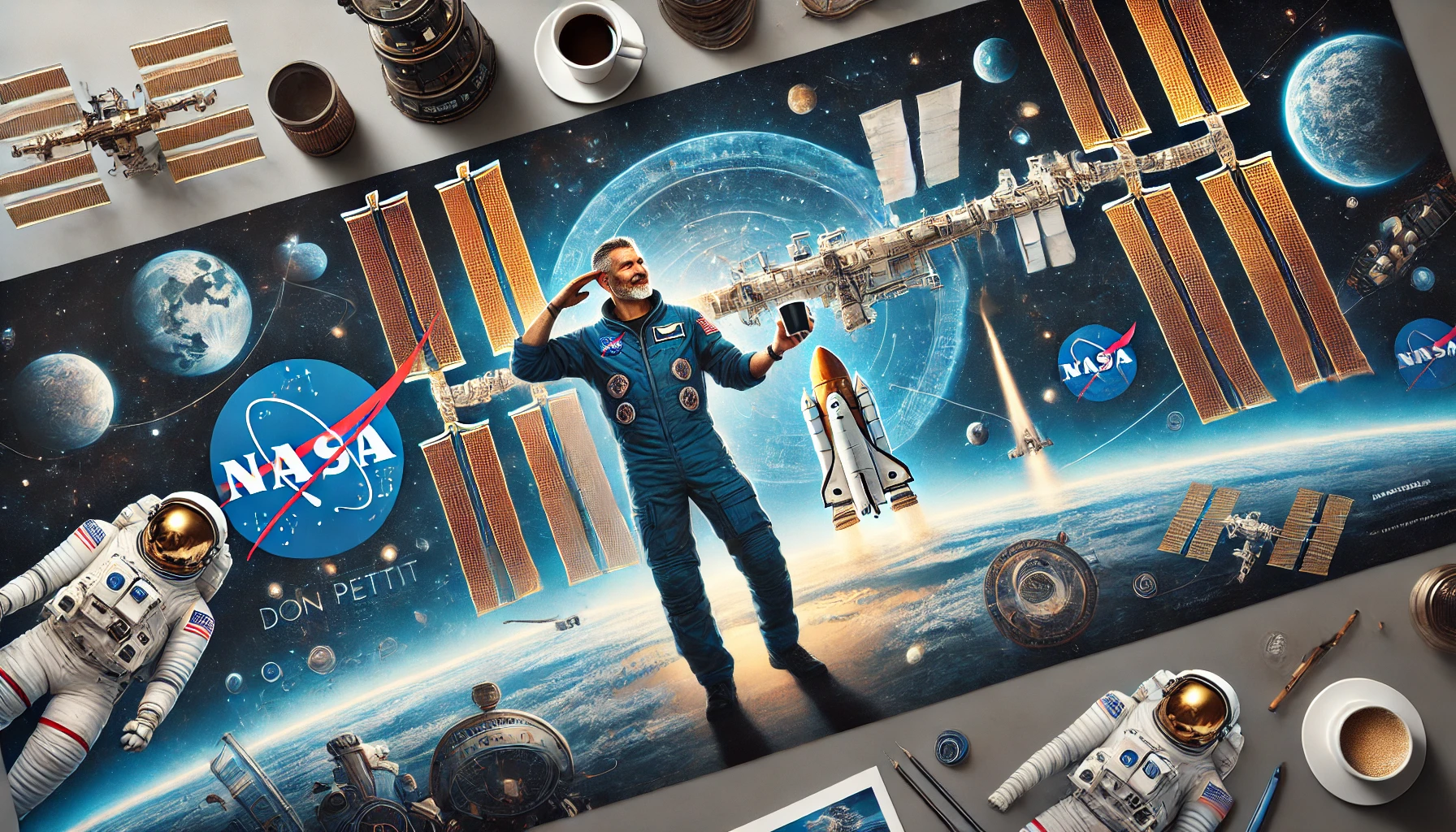The Northern Lights, or Aurora Borealis, are one of the most mesmerizing natural displays, and this September, Michigan is under a G2 Geomagnetic Storm Watch, providing residents and visitors a rare opportunity to witness these colorful lights. Due to a Coronal Mass Ejection (CME) from the sun, auroras might extend further south, making it possible to see the Northern Lights as far south as Michigan. In this blog, we’ll explore the details of the Northern Lights forecast for September 2024, the science behind geomagnetic storms, …
NASA’s Don Pettit, known for his inventive spirit and passion for space exploration, is set to return to the International Space Station (ISS) on September 11, 2024, marking his fourth mission into space. At 69 years old, Pettit holds the distinction of being NASA’s oldest active astronaut, but that hasn’t slowed him down. From his many inventions to his love for capturing stunning images of Earth from space, Pettit is truly one of a kind. Dubbed the “Space MacGyver”, Pettit is known for his resourcefulness, …
NASA’s Starliner spacecraft has been in the spotlight for all the wrong reasons recently. After years of development and high expectations, the spacecraft encountered technical issues during its return, forcing NASA to make the tough call to bring it back empty. From thruster failures to guidance issues, the problems faced by the Boeing Starliner have raised important questions about its readiness for manned space missions. Yet, NASA maintains that this decision was the best option given the circumstances. In this blog, we will dive deep …
The realm of particle physics holds some of the universe’s deepest secrets, and neutrinos, often referred to as “ghost particles,” have captured the imagination of scientists for decades. These subatomic particles pass through everything — including our bodies and planets — without interacting with matter, making their detection incredibly difficult. Recently, groundbreaking work at Fermilab has opened new doors for understanding these elusive particles. The Short-Baseline Neutrino Detector (SBND) has detected its first muon neutrino, marking a major milestone in the hunt for answers about …
Antarctica, the vast and icy continent at the southernmost part of Earth, has not always been the frozen wilderness we know today. For millions of years, this icy expanse has been locked under thick ice sheets, but there was a time when Antarctica was ice-free, teeming with life. Understanding when and why the last ice-free period occurred not only gives us insight into the Earth’s past but also offers clues about how future climate changes might reshape the continent. In this blog, we’ll explore the …
Earthquakes have long been one of the most unpredictable and destructive natural disasters. Despite decades of research, seismologists have struggled to accurately predict when and where the next major quake will hit. However, recent advances in artificial intelligence (AI) are giving scientists new tools to revolutionize earthquake prediction. AI-driven models are improving the accuracy of seismic forecasting, helping communities prepare and minimize damage. In this blog, we’ll explore how AI is enhancing earthquake detection, the role of machine learning in seismology, and how AI is …
The internet is full of strange discoveries, and every now and then, something spotted on Google Maps satellite view sends a wave of curiosity across the world. In 2024, one such discovery—a suspicious pit on Google Maps—has captured the attention of users who stumbled upon it. Initially dismissed as a common land formation, further investigation revealed it to be something far more intriguing. This blog delves into the mystery behind this eerie Google Maps mystery, explores other weird finds on Google Earth, and provides a …
In the world of modern physics, few discoveries have had as profound an impact as the detection of gravitational waves. First predicted by Einstein’s theory of relativity, these ripples in spacetime offer insights into the most extreme events in the universe—such as the collision of black holes or neutron stars. Yet, the exploration of gravitational waves has recently taken an exciting turn with the use of cold atoms and quantum technology. By harnessing the strange properties of Bose-Einstein condensates and atom interferometry, scientists are making …
The universe is expanding, but the rate of that expansion is at the heart of what many are calling “The Biggest Controversy in Cosmology.” Known as the Hubble tension, this discrepancy in the rate at which the universe is expanding has sparked debates and raised fundamental questions about our understanding of the cosmos. While scientists have long accepted the existence of dark energy and the cosmological constant, the discovery of conflicting measurements has deepened this cosmology crisis. In this blog, we will explore the Hubble …
Space exploration has always been synonymous with government-run agencies like NASA. However, with the rise of private companies like SpaceX, the frontier of space is now open to civilians. In 2024, SpaceX is set to make history once again with its Polaris Dawn mission, which will feature the first private spacewalk in history. This mission highlights how civilian spaceflight is becoming more accessible, pushing the boundaries of space exploration and potentially paving the way for space tourism. In this blog, we’ll explore the significance of …










